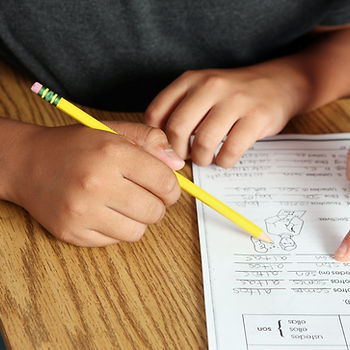
Useful Website Links

The
Orton-Gillingham Principles
The Orton-Gillingham Approach has been described as language-based, multisensory, structured, sequential, cumulative, cognitive, and flexible. These characteristics can be easily amplified and extended as they are in the following attributes.
The basic purpose of everything that is done in the Orton-Gillingham Approach, from recognizing words to composing a poem, is assisting the student to become a competent reader, writer and independent learner.
Personalized
Teaching begins with recognizing the differing needs of learners. While those with dyslexia share similarities, there are differences in their language needs. In addition, individuals with dyslexia may possess additional problems that complicate learning. Most common among these are attention deficit disorder (ADD) or attention deficit disorder with hyperactivity (ADHD).
Multisensory
It uses all the learning pathways: seeing, hearing, feeling, and awareness of motion, brought together by the thinking brain. The instructor engages in multisensory teaching to convey curricular content in the most understandable way to the student. The teacher also models how the student, by using these multiple pathways, can engage in multisensory learning that results in greater ease and success in learning.
Diagnostic and Prescriptive
An Orton-Gillingham lesson is both diagnostic and prescriptive. It is diagnostic in the sense that the instructor continuously monitors the verbal, nonverbal, and written responses of the student to identify and analyze both the student’s problems and progress. This information is the basis of planning the next lesson. That lesson is prescriptive in the sense that will contain instructional elements that focus upon the resolution of the student’s difficulties and that build upon the student’s progress noted in the previous lesson.
Articles
Direct Instruction
The teacher presentations employ lesson formats which ensure that the student approaches the learning experience understanding what is to be learned, why it is to be learned, and how it is to be learned.
Systematic Phonics
It uses systematic phonics, stressing the alphabetic principle in the initial stages of reading development. It takes advantage of the sound/symbol relationships inherent in the alphabetic system of writing. Spoken words are made up of individual speech sounds, and the letters of written words graphically represent those speech sounds.

Applied Linguistics
It draws upon applied linguistics not only in the initial decoding and encoding stages of reading and writing but in more advanced stages dealing with syllabic, morphemic, syntactic, semantic, and grammatic structures of language and our writing system. At all times the Orton-Gillingham Approach involves the student in integrative practices that involve reading, spelling, and writing together.
Linguistic Competence
It increases linguistic competence by stressing language patterns that determine word order and sentence structure and the meaning of words and phrases. It moves beyond this to recognizing the various forms that characterize the common literary forms employed by writers.
Systematic and Structured
The teacher presents information in an ordered way that indicates the relationship between the material taught and past material taught. Curricular content unfolds in linguistically logical ways which facilitates student learning and progress.
Amazing People
Sequential, Incremental, and Cumulative
It draws upon applied linguistics not only in the initial decoding and encoding stages of reading and writing but in more advanced stages dealing with syllabic, morphemic, syntactic, semantic, and grammatic structures of language and our writing system. At all times the Orton-Gillingham Approach involves the student in integrative practices that involve reading, spelling, and writing together.

Continuous Feedback and Positive Reinforcement
The approach provides for a close teacher-student relationship that builds self-confidence based on success.
Cognitive Approach
Students understand the reasons for what they are learning and for the learning strategies they are employing. Confidence is gained as they gain in their ability to apply newly gained knowledge about and knowledge how to develop their skills with reading, spelling, and writing.
Emotionally Sound
Students’ feelings about themselves and about learning are vital. Teaching is directed toward providing the experience of success. With success comes increased self-confidence and motivation.
